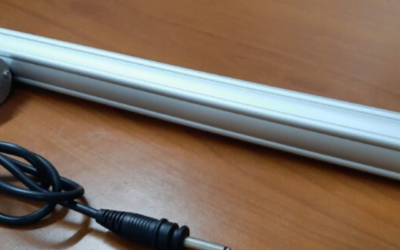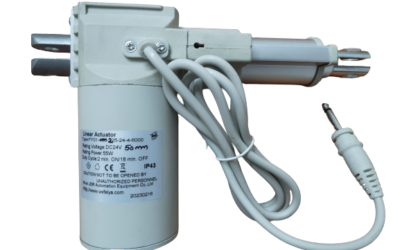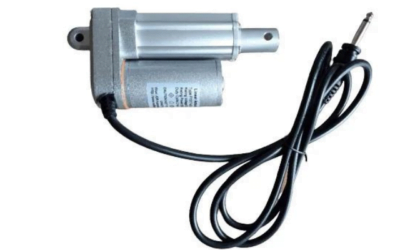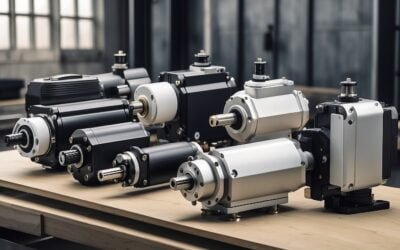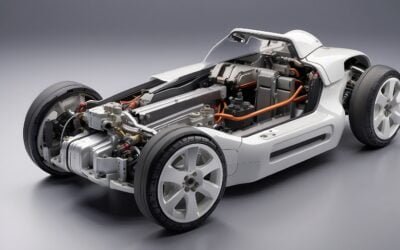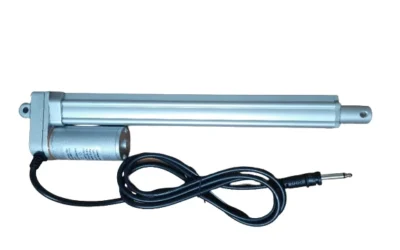BlogS
How Electric Actuators Are Shaping Industries
Introduction: In a world where automation and precision are paramount, electric actuators have emerged as silent heroes, reshaping industries across the globe. From manufacturing plants to healthcare facilities, these compact and powerful devices are playing a pivotal...
How Electric Actuators Are Transforming Industries
In the ever-evolving landscape of industrial automation, the role of electric actuators has become increasingly pivotal, reshaping the way industries operate and elevating efficiency to new heights. As the demand for precision, reliability, and sustainability...
Electric Actuators for Compact Spaces
Introduction: In the ever-evolving landscape of automation, the demand for efficient and space-saving solutions has never been more pronounced. Industries ranging from manufacturing to robotics are increasingly turning to innovative technologies to streamline their...
Applications of linear Electric Actuators in Industrial Automation
Introduction: In the ever-evolving landscape of industrial automation, the role of linear electric actuators has become increasingly prominent. These versatile devices are revolutionizing the way various processes are carried out in industrial settings, offering...
Design and Engineering Considerations for Electric Actuator Integration in Automobiles
Introduction: The automotive industry is undergoing a transformative shift towards electric and autonomous vehicles, necessitating advancements in every aspect of vehicle design and engineering. Electric actuators, with their precision and efficiency, play a crucial...
Linear vs Rotary – Choosing the Right Electric Actuator for Your Application
Introduction: In the dynamic realm of industrial automation, selecting the right electric actuator is paramount to achieving optimal performance and efficiency. Two primary types dominate the landscape: linear and rotary electric actuators. Each type possesses unique...
Frequently Asked Questions(FAQ)
What is a linear actuator?
A linear actuator is a device that converts rotational motion into linear motion. It is used to move objects in a straight line
What are the benefits of using a linear actuator?
The benefits of using a linear actuator include precise and controlled linear motion, compact size, easy installation, and efficiency.
How do I install and maintain my linear actuator?
The installation and maintenance of a linear actuator will depend on the specific model and type. Refer to the manufacturer’s instructions for installation and maintenance guidelines.
What safety precautions should I take when working with linear actuators?
Always follow the manufacturer’s instructions and safety guidelines when working with linear actuators. Ensure that the actuator is properly secured and that the power source is disconnected before working on the actuator.
What is the difference between a linear actuator and a rotary actuator?
A linear actuator moves in a straight line, while a rotary actuator rotates around an axis. Linear actuators are used when linear motion is required, whereas rotary actuators are used when rotational motion is needed.
What is the difference between an electric linear actuator and a hydraulic linear actuator?
An electric linear actuator uses electrical energy to create linear motion, while a hydraulic linear actuator uses pressurized hydraulic fluid to create linear motion. Electric linear actuators are typically easier to install and maintain, while hydraulic linear actuators can generate higher force.
Can a linear actuator be used for precise positioning?
Yes, linear actuators are often used for precise positioning due to their ability to provide accurate and repeatable linear motion.
How do I determine the stroke length of a linear actuator?
The stroke length of a linear actuator is the distance the actuator can travel in a straight line. To determine the required stroke length, consider the distance the actuator needs to move to complete its intended task.
What are some common materials used to make linear actuators?
Linear actuators can be made from a variety of materials, including aluminum, stainless steel, plastic, and carbon fiber. The choice of material will depend on the specific application and environmental conditions.
Can a linear actuator be used in hazardous environments?
Yes, some linear actuators are designed for use in hazardous environments and are made from materials that can withstand exposure to extreme temperatures, chemicals, or other hazardous conditions.
Can a linear actuator be customized to fit my specific application?
Yes, many manufacturers offer customized linear actuators to fit specific applications. These can include modifications to stroke length, force, speed, mounting options, and environmental protection.

